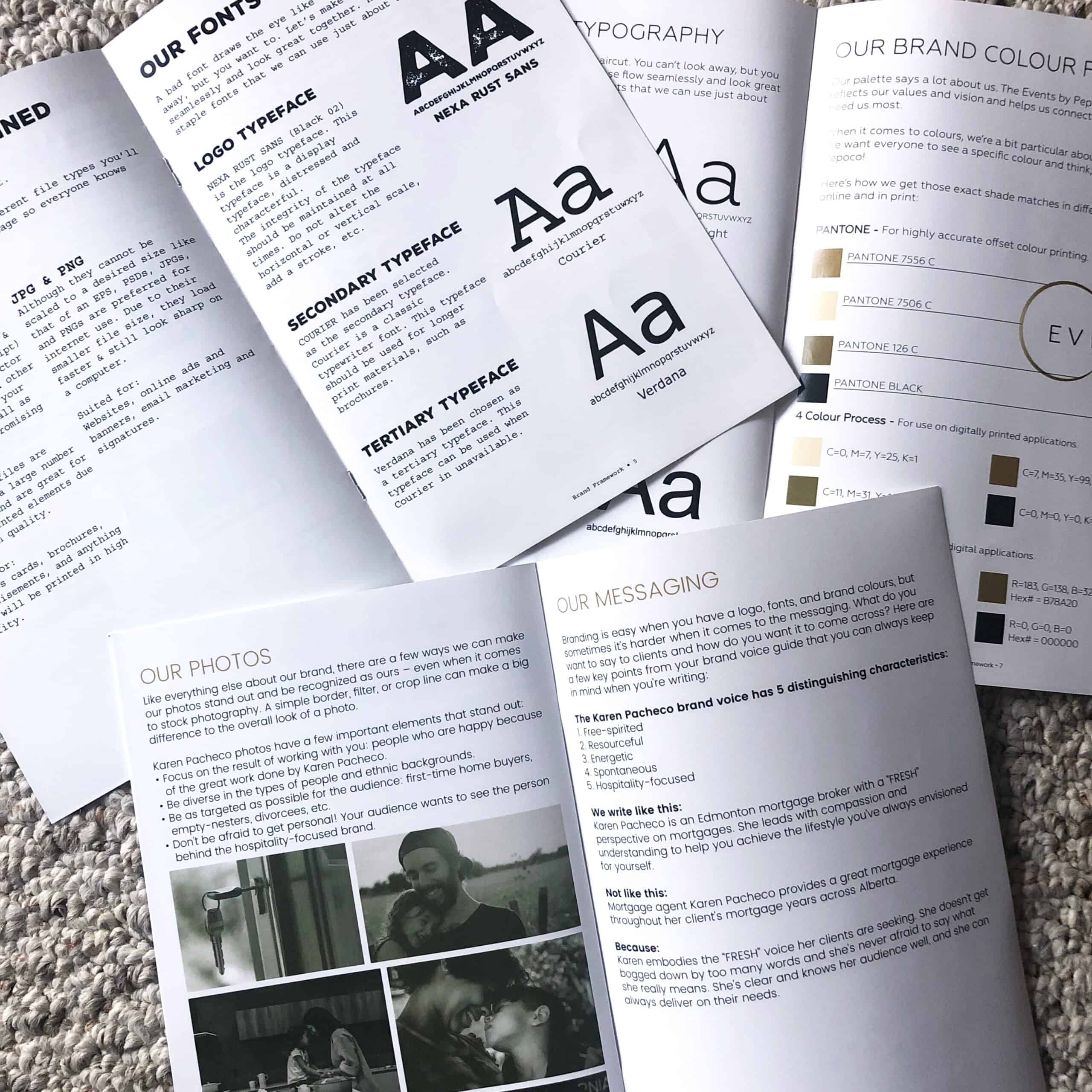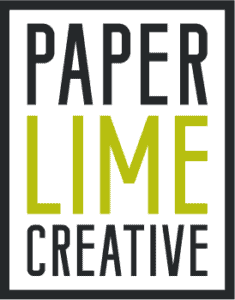Brand frameworks, brand books, brand bibles or brand guidelines. There are dozens of names for these guidebooks that teach you how to use your brand effectively. These dos and don’ts let you stay ‘on-brand’ that infamous buzzword that brand and marketing strategists love to toss around.
They are an essential branding tool; a how-to guide for your rebrand! If you are getting a logo developed you must get brand guidelines along with it.
We don’t cut corners or make compromises when it comes to brand guidelines. Even if you order just a logo with us, you will receive a logo guide. Not having guidelines sets you up for failure down the road, and frankly, we’re not okay with that.
When you don’t know important details about your rebrand like your brand colour or fonts, it means that at some point you will be paying someone to figure it out. That’s not fair! You paid for your rebranding once already, you shouldn’t be paying someone to do the same work again.
The other problem with guessing in the future is just that… It’s a guess. You (or a vendor) might guess your brand colour or font wrong, creating inconsistencies in your brand which weakens your visibility and credibility.
Maintaining and creating a strong brand requires consistency across multiple areas. There is no room for inconsistency in a marketing strategy!
Let’s get started.
What are brand guidelines?
Brand guidelines come in all shapes and sizes. Large organizations like Apple or McDonald’s will have huge manuals for their brand guidelines. It will describe how every marketing material should look and feel including television ads, uniforms, packaging, promo materials and more.

The average SME doesn’t need something as involved as a huge multi-national company but it is important to have some key pieces of your brand clearly outlined. The purpose of brand guidelines is to create brand consistency and accuracy regardless of who is using the brand.
Do you hire interns? Do you outsource any of your advertising? These are instances when you would want to hand over your brand guidelines to these contractors to ensure your brand is being represented appropriately.
Brand guidelines from us come in the form of a fabulous high-gloss magazine-style book that gives you a step-by-step breakdown of many aspects of your brand. We always provide clients with two booklets so that they have an extra for staff, or if they ever have to hand one over to a vendor, then there are extra. We also always provide a digital file as well.
Why is it important to get brand guidelines from your brand strategist?
If you are in the market for a logo design or brand development, you need to make sure that brand guidelines are one of the deliverables from your designer. When we design a company logo or develop a brand, there’s a lot of research and decisions that go into it.
Simply handing over logo files doesn’t articulate all of the decisions that were made and the thoughts behind them. A logo is one very tiny (albeit important) piece of a rebrand, but only having your logo will not communicate the full brand.
There is also a lot of graphic design jargon that we don’t expect people to remember. While you don’t need to know what a vector is, the day will come when you will be asked for one. You do need to know it exists and where to find it to save yourself time and headaches. Your guidelines are meant to be a reference document that you go back to if you ever have a question.
What’s included in my brand guidelines?
Your brand guidelines will include valuable information to help you continue to build your brand. While it will vary from brand strategist to brand strategist, it should include your positioning statement, your brand identity and any other details relevant to your brand development strategy.
Target Audience
We summarize your target audience in your brand guidelines. While we know that you know who your target market is, other vendors won’t have a clue. You can shave time, effort and maybe even money by saving them the guesswork on what they’re doing.
Brand Characteristics
Brand Characteristics = your personality + your values. These are great to have to refer back to, just like you’re values if you are ever stuck on market materials. Again, it’s great for vendors to know what feel you’re going for as well.
Your Logo
A brief overview of your new logo. It will include details on logo clear space (the area around your logo that should be left empty) and any pertinent design choices like icon symbolism.
Logo Variations
A versatile logo will have different variations, even if it’s just a black-and-white option. Some brands also have options where the icon can stand on its own (like McDonald’s), and some brands will have different options for horizontal or vertical orientations. This section will show you how and where to use all of the variations.
This section may also include what not to do!
File Formats
There are lots of different file types for logos! This section goes over them briefly so that you have an idea of what file type is best to use in a given situation.
It will touch briefly on the difference between a vector logo and a raster logo.
Fonts & Typography
Fonts are a huge piece of a brand. This is one area we see businesses get stuck in the future when they don’t know what their logo font is or how to get it. This section lets you know what your main brand font is and any options for secondary or tertiary fonts that might exist
Brand Colours
Colour is a big piece of brand recognition. Our brains recognize colour first before shape or content. Having accurate brand colours is very important for this reason! Look at what Coca-Cola has done with that shade of red.
The brand colours section of your brand guidelines will break down every colour into its programmable numbers for print and digital uses (hint: they’re not the same!)

Stationery
Many brand guidelines will include a stationery section or an “in-use” section. This will give you an idea of how to use your logo, colours and fonts in actual marketing materials.
Photography
Photography is a hugely important part of your brand. Having a section that explains what characteristics you look for in photography help you save time if you’re searching for stock, or articulate what you’re looking for to a brand photographer.
Any unique filters will also be noted. Maybe your brand uses black and white photography exclusively, or you have a dark and moody vibe.
Brand Story
Brand stories are a phenomenal way to create an emotional connection with your target audience. Rather than being a sales pitch or describing a particular product or service, the brand story is meant to tell people who you are, what you do and why it matters that they get involved.
Brand storytelling is becoming a key part of brand messaging and it can be a great jumping-off point to create other content for your print, social media or, digital marketing pieces.
Don’t Have Brand Guidelines of Your Own?
Regardless of who you choose to do your branding, be sure to get some sort of branding takeaway that gives you a guideline or framework on how to use your brand. We will retroactively create brand guidelines if you didn’t get them from your original designer.
But perhaps not having brand guidelines gives you the opportunity to start fresh with a shiny new brand! Check out our portfolio or book a consultation call!
